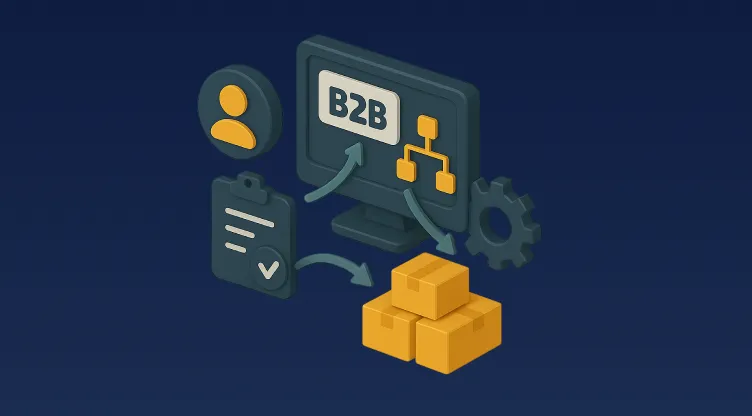Optimizing Procurement: Purchase Order Benefits & Challenges

Table of Contents
Purchase Order Benefits
Streamlining Procurement and Inventory Management:
POs form the heart of inventory needs and organizing and tracking. With such details on the specifics of every transaction in POs- the item description, quantity, and delivery terms will always be an open understanding by a business as to what they order. It further helps minimize overstocking and stockouts or other forms of inventory-related issues. With proper inventory control from the purchase order benefits, one can thus benefit from more operational efficiency and save costs.
Improving Financial Tracking and Budgeting:
It is one of the major purchase order benefits in improving financial tracking and budgeting. POs provide a solid report of all the transactions made, which is vital in financial planning and auditing. The purchase order process involves documenting the agreed-upon prices, quantities, and delivery schedules to let the companies properly forecast their expenses. It allows companies to control the cash flow to make proper arrangements for future expenditures in compliance with other financial regulations.
Decrease in Mistakes & Disputes relating to Transactions:
Formal documentation via purchase orders reduces the chances of errors & disputes about transactions. The firms avoid disputes, wrong rates, or errors in delivering commodities by using a well-articulated procedure for purchasing through a purchase order. Legal protection can be enjoyed on purchase orders, for POs serve as an agreement between buyer and supplier with legal recourse available in case the former is not met or not matched as anticipated. The more formalized way also helps out with compliance and regulatory matters. The businesses comply with the norms and laws in that industry.
Control Over Cost and Spending Clarity:
The order helps control spending because of clear visibility. The purchase order process involves negotiating terms that result in a quantity discount or convenient payment terms. This is the benefit of purchase orders that give businesses cost control, forward buying, and assurance that the actual spending matches budgetary limitations. Knowing the kinds of purchase orders can also help business organizations use the correct form of the document when dealing with any procurement, further helping them have better control of their costs.
Audit Trail & Record-Keeping:
This process is essential to maintaining a clear audit trail as regards financial and operating reviews. All transactions will be recorded through the purchase order process with relative ease. Accurate history on all purchases will be documented by the process! The major purchase order benefits include the assurance of documentation on all transactions at the time of audits. The kind of purchase orders used also determines the level of detail maintained in keeping records, as most companies will keep documents to achieve compliance and regulations.
Common Challenges in Purchase Order Management
Handling Large Orders:
Any business can be quite challenged when dealing with a huge number of orders. When there are large volumes of POs, the entire process becomes laborious and long in the hands of individuals. Handling large numbers of POs leads to delays, errors, and inefficiencies. This can be addressed by strategies such as the automation of the purchase order process, which aids in creating, approving, and tracking POs. Automation saves time on repetitive tasks, giving the procurement team more time to engage in strategic activities.
Lack of integration with accounting systems:
Probably, the most common problem of purchase order management is that they are not integrated with accounting systems. In this regard, the purchase orders that are not directly linked to the AP subsidiary ledger result in mismatching, delayed payments, and loss of finances. Businesses can easily overcome this problem by integrating their purchase order process with accounting or ERP systems. This integration enables the tracking of purchases accurately. It also improves payment processing and provides vital information about the financial health of the company. Middleware or APIs can be applied to make this integration easier as data flows correctly between systems.
Delayed communication with Suppliers:
Delayed responses by suppliers cause disturbances in the order of purchase; this may eventually lead to a delay in the delivery, late production, and dissatisfaction among the customers.
Thus, businesses should institute clear communication mechanisms with suppliers. Regular meetings with the suppliers, scheduled check-ins, and video conferencing technology must help them effectively communicate. Additionally, adoption of purchase order management software that would provide real-time visibility into the status of orders would help in tracking problems well in advance so that they are addressed beforehand before becoming unmanageable.
Technology Solutions for Order Management:
Software solutions for dealing with purchase orders form the core of overcoming many of the problems associated with procurement. Contemporary software for managing purchase orders automates all stages of the purchase order process, from creation to payment. This avoids potential errors, enables a fast approval process, and follows real-time monitoring. These could also be fully integrated into business systems as an integrated approach toward procurement and finance activities. Technologies enable a firm to avail itself of all those purchase order benefits, which could include cost management, transparency, and the capacity to maintain auditing trials.
Overcoming Communication Challenges:
Effective communication is the key to effective purchase order management. Common causes of mistakes are missed deadlines, and strained relationships with suppliers; these occur from misunderstandings, unclear instructions, and failure to follow up. To enhance communication, the business needs to harmonize expectations with suppliers, standardize PO formats, and track and update the status of the orders.
Implementing a communication protocol that involves escalation procedures for emergencies would also be beneficial. Businesses would easily implement practices of transparency and trust in their business operations and ensure that any practice, including streamlined procurement and inventory management concerning purchase orders, benefits the company.
Best Practices for Efficient Management of Purchase Orders
Automation in the management of purchase orders has numerous purchase order advantages. Businesses can streamline the purchase order process by using purchase order management software to eliminate manual errors, speed up the processing of approvals, and provide real-time visibility into order status. Automation helps in the efficient creation, tracking, and management of purchase orders, thus saving costs, streamlining inventory management, and offering superior control over finances and budgeting. Automated systems can easily manage the types of purchase orders so that the right documentation can be used for different scenarios in procurement.
Purchase Order Policies Review and Updates: Purchase order policies should be updated to meet business requirements and ensure efficient purchase orders. Through regular review, the firm's changing needs, changes in regulations, and changes in industry standards are validated and integrated into the purchase order cycle. This helps businesses achieve benefits such as compliance, risk reduction, and proper cost control. An understanding of the different kinds of purchase orders and their consequences helps businesses change their policies according to the most efficient procurement methods.
Training Teams on Best Practices in Procurement: Educating the employees on the whole process of procurement is essential in managing purchase orders. Training on what is purchase order, the purchase order process, and the purchase order benefits, depending on their type, would enable teams to make the best decisions and hence reduce errors or disputes in the transactions and even improve communication with suppliers.
Developing a Strong Procurement Strategy: Creating a long-term procurement plan essentially equates to knowing what a purchase order is and how to optimize the purchase order process. A good strategy incorporates selecting the proper types of purchase orders for various situations, cost control, and aligning procurement with business strategies. This approach shares many of the purchase order benefits, such as transparent spending, inventory management, and financial tracking!
Continuous Improvement of Procurement Processes: This is management of purchase orders with strategies for constant improvement of procurement practices. Organizations should continually monitor the purchase order process to identify the areas to improve, integrate technology solutions, and motivate continuous learning.
Conclusion:
It is important to know what is purchase order and the purchase order process to manage business activities properly. While some of the purchase order advantages like streamlined procurement & inventory management may be utilized effectively with tools such as Omniful, there would be appropriate forms of purchase orders for different occasions.
FAQs:
How do purchase orders help in building good supplier relationships? POs facilitate clear communication and reduce the chance of misunderstanding and mistrust.
What is the role of technology in the management of a purchase order? Technology solutions can automate and integrate the purchase order process, increasing efficiency and accuracy.
Why is continuous improvement crucial in procurement? Continuous improvement helps to ensure that purchase order benefits such as cost control and inventory management are constantly optimized.























